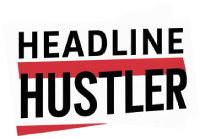Trying to get a social media manager job in 2025 feels a bit like trying to catch smoke. Everything is moving so fast, new platforms pop up, old ones change their algorithms, and you’re supposed to have a resume that somehow covers all of it. It’s a lot.
So you’ve got the skills. You know how to make a TikTok that doesn’t feel like an ad, you can write a caption that gets comments, and you understand why a brand should be on Threads. But getting that across on a one-page document, a resume, is a totally different game.
This isn’t about just listing your old jobs. It’s about building a story that makes a hiring manager stop scrolling through the hundreds of other applications they have. And it is your job to make their job easier.
What’s the Big Deal with a Social Media Resume in 2025?
First off, a lot of companies use these robot scanner things, Applicant Tracking Systems (ATS), to read your resume before a human ever does. It’s kind of annoying.
These systems are looking for keywords. So if the job description says “Community Management,” you better have “Community Management” on your resume. It’s a matching game.
But it’s not just about beating the robots. It’s about showing you get the business side of social media. Being good at posting isn’t enough anymore. You have to be good for the bottom line.
A resume is basically your sales pitch. It needs to be sharp, to the point, and focused on results. Not just a list of stuff you did.
Nailing the Basics: Contact Info and Professional Summary
Okay so your contact info up top, pretty standard. Name, phone number, email. A link to your LinkedIn profile is a must have. Make sure it’s cleaned up and looks professional.
Then comes the summary. Don’t call it an “Objective,” that’s old school. A professional summary is a quick little blurb, maybe three or four lines, that says who you are and why you’re great.
Think of it as your elevator pitch. It’s the first thing they read so it has to grab them.
What a Good Summary Looks Like
A good summary is specific. It throws in some numbers and key skills right away.
Example: “Social media manager with 5+ years of experience building online communities for fashion brands. Grew Instagram engagement by 150% at XYZ Company through video content. Good with Sprout Social, brand voice, and running ad campaigns.”
See? It’s quick, has numbers, and lists some real skills.
What a Bad Summary Looks Like
A bad summary is just full of fluff. It’s vague and doesn’t really say anything.
Example: “A highly-motivated social media professional looking for a new opportunity to use my skills in a fast-paced environment. I am a team player who is passionate about social media.”
That tells the recruiter basically nothing. Anyone can say they’re a team player. You have to show it.
The Experience Section: Where You Brag with Numbers
This is the most important part of your social media manager resume. Full stop. This is where you connect your daily tasks to actual business results. Don’t just list your duties.
Each job you list should have a few bullet points under it. And those bullet points should, whenever possible, start with an action verb and end with a number.
Writing Your Job Descriptions
For each role, don’t just say “Managed the company’s Instagram account.” That’s boring and tells me nothing about what you actually achieved.
Instead, think about what you did and what happened because of it. Did you get more followers? More comments? Did people click the link in the bio more? Those are the things that matter.
It is this section that really gets a hiring manager’s attention. Because it shows you aren’t just posting and praying you’re thinking about the goals.
The Magic of Metrics
Numbers are your best friend on a resume. They are hard evidence. They turn a vague statement into a concrete achievement.
Here are some ways to put numbers in your bullet points:
Managed a content calendar across 5 social media channels (Instagram, TikTok, Facebook, X, LinkedIn).
Grew organic TikTok followers from 1,000 to 25,000 in 8 months, which was considered to be a big win.
Wrote and scheduled 15+ posts per week, resulting in a 45% increase in average engagement rate.
Ran a lead generation campaign on Facebook Ads with a $5,000 budget, bringing in 200 qualified leads at a cost of $25 per lead.
Monitored brand mentions and responded to customer DMs, which helped improve our positive sentiment score by about 15%.
These are the details that show you’re not just creative, you’re effective. You get how social media helps a company make money.
Show, Don’t Just Tell: Your Skills and Tools Section
After your experience, you need a section to list your skills. This is a great spot for those keywords the robot scanners are looking for. It’s generally a good idea to break it down.
You can split it into a couple of different categories to make it easier to read. A technical skills area and then a more general skills area.
The Tech Stuff (Hard Skills)
This is where you list all the software and platforms you know how to use. Be specific.
Social Media Tools: Sprout Social, Hootsuite, Buffer, Agorapulse
Analytics Tools: Google Analytics, Iconosquare, native platform analytics (Facebook Insights, etc.)
Content Creation: Canva, Adobe Photoshop, CapCut, Premiere Pro
Ad Platforms: Facebook Ads Manager, TikTok Ads, LinkedIn Ads
Other things: Asana, Trello, Slack, SEO tools (like SEMrush)
The People Stuff (Soft Skills)
These are skills that are less about software and more about how you work. They’re still super important for a social media job.
Copywriting
Community Management
Content Strategy
Brand Voice Development
Reporting and Data Analysis
Time Management
Communication
Don’t just list them. Make sure your experience section has examples that prove you have these skills. If you say you’re good at content strategy, your bullet points better mention something about planning a content calendar that got results.
Frequently Asked Questions About SMM Resumes
1. Should I put my personal social media handles on my resume?
Generally, only if they are professional and showcase your work. If your Instagram is just pictures of your cat, maybe leave it off. But a well-curated LinkedIn or a professional X account can be a good thing to include.
2. How long should my social media manager resume be?
One page. Seriously. Unless you have like, 15+ years of really deep experience, keep it to one page. Recruiters spend only a few seconds on each resume, so make it easy for them to scan.
3. What if I don’t have a lot of “official” experience?
Use what you’ve got. Did you manage the social media for a college club? Did you help a friend’s small business get started on Instagram? That counts. Frame it professionally, focus on the results you got, and put it in your experience section.
4. Do I really need a cover letter in 2025?
Yeah, you probably do. A lot of places still ask for one. It’s your chance to add some personality and explain why you’re a perfect fit for that specific company, not just any company. Don’t just repeat your resume.
Key Takeaways
Alright, that was a lot of information. If you remember anything, remember this stuff:
Tailor it. Don’t send the same resume to every job. Read the job description and make sure your resume uses the same language.
Numbers are everything. Find a way to measure your accomplishments. “Increased engagement by 50%” is way better than “Posted engaging content.”
Beat the robots. Put keywords from the job description in your resume so the ATS scanners can find them.
Keep it to one page. Be ruthless. Cut out anything that isn’t directly helping you get the job.
Proofread. Seriously. Read it over. Then have a friend read it over. A typo can make you look sloppy.

